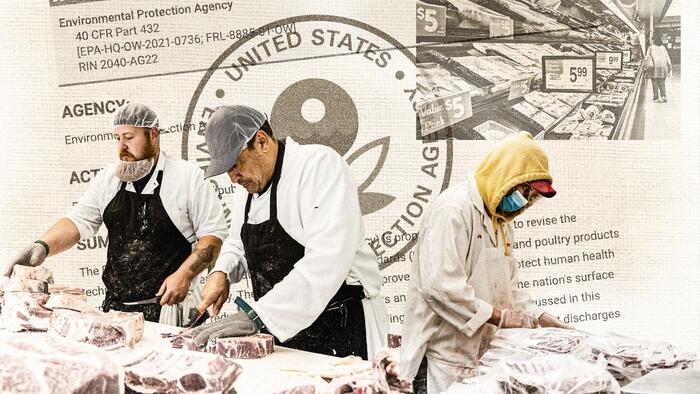In recent years, food prices in the United States, particularly for meat and poultry, have surged dramatically, with forecasts indicating further increases due to new Environmental Protection Agency (EPA) regulations set to take effect in 2025. According to the U.S. Department of Agriculture’s Food Price Outlook released in September, prices for beef and veal have been rising for six consecutive months and are projected to climb by 5.2% in 2024. While poultry prices have also seen increases, they are expected to rise at a slower pace. Multiple factors contributing to these price spikes include pandemic-related disruptions in supply chains and a surge in inflation unseen since the 1980s. Analysts express concerns that the upcoming regulatory changes could further strain the meat and poultry supply chain, leading to heightened prices and job losses within the industry.
The EPA’s proposed rule modifications regarding wastewater management for meat processors, initially announced in January, have garnered significant attention and criticism. This regulatory update arises from lawsuits filed by environmental groups aimed at updating outdated pollution control standards for slaughterhouses. The proposed changes suggest implementing stricter effluent limitations that could affect how meat and poultry processors manage their wastewater, which environmental advocates argue is necessary for combating pollution but industry stakeholders see as a potential threat to their operations. The anticipated result of these changes could be the closure of numerous processing facilities, leading to reduced job availability and a decline in overall meat supply.
The proposed regulation details three options for reducing wastewater discharge from meat processors, aiming to cut down pollutants such as nitrogen and phosphorus significantly. The EPA estimates that its favored option could essentially force at least 16 plants to close, impacting around 17,000 jobs in the meat processing sector. Besides addressing water pollution, the proposed changes include stricter pretreatment standards for various pollutants. This could give rise to increased costs for meat processors, potentially translating into higher consumer prices and reduced availability of meat products such as beef, chicken, turkey, and pork, which would further impact American families navigating food inflation.
Additionally, the potential regulatory changes are met with pushback from numerous states that view the EPA’s move as federal overreach. A coalition of attorneys general from 27 states has raised concerns regarding the proposed wastewater regulations, arguing that they would impose unwarranted restrictions on processors that discharge wastewater indirectly through treatment plants. This expansion of regulatory reach could encompass thousands of additional facilities not previously included under federal oversight. The states argue that the proposed regulations could further exacerbate inflation, taking into consideration the already high costs of living that consumers face.
Critics also call into question the integrity of the data used by the EPA in forming the basis for the proposed regulations. They contend that the findings of environmental groups that have initiated lawsuits against the agency appear to be the primary source of information guiding the proposed updates. The link between high pollution levels from meat processing and public health is framed by the EPA as a driving force behind the regulation; however, the states contest the methodology and data interpretation used by the agency as being flawed or biased. They caution that shutting down processing facilities could have serious ramifications for the meat supply chain, which is already vulnerable.
As the dialogue continues, the EPA emphasizes that the new regulations are designed to balance ecological responsibility with economic viability, asserting that compliance options will not be prohibitively expensive for processors. While the agency contends that cleaner water standards will deliver significant ecological benefits and monetary savings in the long run, the possible consequences for job loss and higher food prices loom large in the minds of stakeholders. With final rulings expected in 2025, the ongoing negotiations surrounding these regulatory changes will be critical for the future of the meat processing industry, food prices, and the broader economic landscape. The interplay of environmental, health, and economic interests continues to be a pivotal issue for lawmakers, industry leaders, and consumers alike as they navigate the complexities of food production and environmental responsibility.

